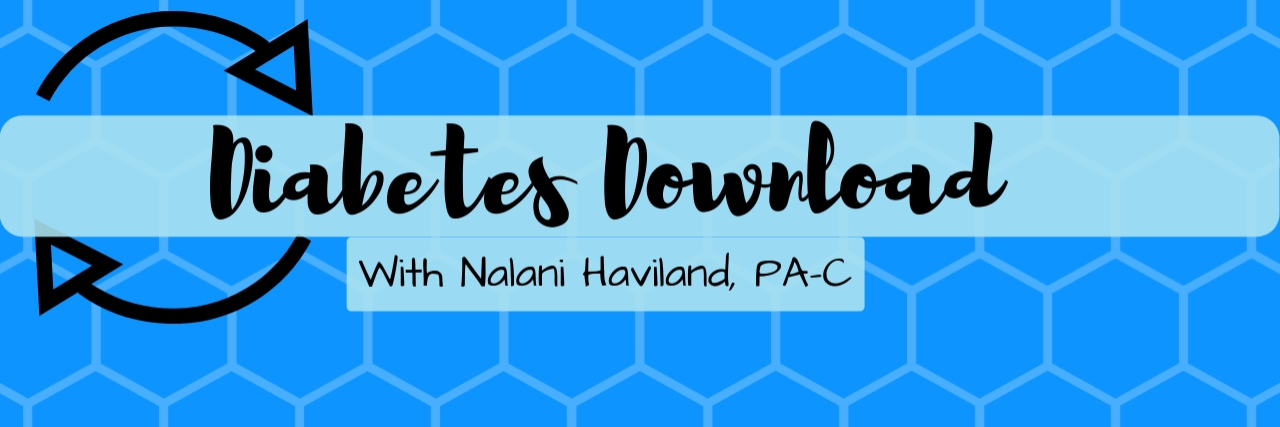Diabetes Download: How Do I Know If I'm Taking the Right Amount of Basal Insulin?
In Diabetes Download, Nalani Haviland, a board-certified physician assistant and diabetes expert who has type 1 diabetes herself, answers the Mighty community’s questions.
Editor's Note
There are two types of insulin people with type 1 diabetes need: bolus and basal insulin. In this column, Nalani Haviland, PA-C, explains how to determine if you are taking the correct amount of basal insulin.
This column is solely for general education and information. It is not intended to provide any medical advice and cannot replace or be a substitute for your relationship with your healthcare provider. Always talk to your clinician for any issues or questions.
The Mighty community asked: “How do I know if I’m taking the right amount of basal insulin?”
Whether you’re using long-acting basal insulin or insulin pump therapy, an accurate basal dose of insulin is imperative to provide a stable baseline for carb and correction boluses. It allows for steady fasting blood glucose (BG) levels, minimal BG fluctuations, and more freedom regarding meal timing (someone with an accurate basal should be able to skip meals without going low). Once an accurate dose is established, it is much easier to establish a carb factor (insulin to carb ratio) and correction factor (insulin to BG ratio).
So, how do we know if we are taking the right amount of basal insulin? We do basal testing! When taking an accurate basal dose, we should have a relatively flat glucose pattern when no food is eaten. Basal testing should be done when switching to a new basal insulin or when a basal dosage is changed.
Read all the latest Diabetes Download columns here.
Basal testing can be done in three different sections: overnight, first half of the day, and second half of the day. The overnight basal test is the easiest because events that cause hypo or hyperglycemia (exercise, stress, food) are usually stopped. Start your overnight basal test at least four hours after your previous rapid-acting insulin dose (due to the four hour duration of action of rapid insulin). You should begin your basal testing at a relatively good BG (100-150 mg/dl suggested). Do not eat or give another dose of rapid acting insulin before going to bed. Test BG at 2 a.m. and again upon waking (or every two hours if you wish). Continuous glucose monitors (CGMs) are great for basal testing.
With an accurate basal dose, your BG should not have risen more than 15 mg/dl or fallen more than 30 mg/dl overnight. If you go low during this test, stop and treat. If your overnight basal dose does not meet the described standards, raise or lower your dose (0.5-2.0U) and try again!
To test your basal in the first half of the day, start when you wake up with good BGs. If you are using injections, take your morning basal dose, skip breakfast, and eat a late lunch (the test should last eight hours). As with the overnight basal test, your BG should not rise more than 15 mg/dl or fall more than 30 mg/dl. The same applies to testing your basal during the second half of the day which should start four hours after an early lunch and end just before bedtime. If in any case you have a low, lower your basal dose and test again another day.
Repeat the above until you have found a basal dose that meets the standards! Although it seems like a lot of work, having an accurate basal dose is worth it. Trust me! Consult with your clinician on your findings. Your basal dose is probably too high if you find that you have frequent lows while fasting or when you skip meals. It is probably too low if you experience high fasting numbers or need frequent correction boluses to lower BGs.
Glossary of Terms
Type 1 Diabetes: A chronic condition that occurs when the pancreas produces little to no insulin. As a result, the body is unable to properly process glucose for energy. It is primarily managed with frequent blood glucose monitoring, diet, exercise, and either insulin pump therapy or multiple daily injections.
Type 2 Diabetes: A chronic condition resulting from insulin resistance and/or an inadequate response to insulin secretion. This results in the body’s inability to properly process glucose. It is managed with frequent blood glucose monitoring, oral or injectable medications, diet, exercise, and sometimes insulin.
Blood Glucose: Another name for blood sugar. Having blood glucose levels that are too high or too low is the hallmark sign of diabetes.
Insulin: A hormone produced by the pancreas. Insulin allows for the regulation of blood glucose and without it, the body cannot process glucose for energy. People with diabetes must get their insulin either through injection or insulin pump therapy.
Diabetic Ketoacidosis (DKA): A complication of uncontrolled diabetes caused by an insufficient amount of circulating insulin. This usually leads to high blood glucose levels and a buildup of blood ketones, byproducts of the breakdown of fatty acids. Untreated diabetic ketoacidosis can lead to coma and death.
PWD: Person with diabetes
Basal Insulin: Also called “background insulin.” In people without type 1 diabetes, the pancreas supplies consistent basal insulin to maintain blood glucose levels between meals. People with type 1 diabetes must inject long-acting insulin to maintain correct blood glucose levels.
Bolus Insulin: Insulin made by the pancreas in response to glucose consumed in food. People with type 1 diabetes must inject rapid-acting insulin immediately before a meal to maintain correct blood glucose levels.
Follow me on Instagram at @diabetes_pa, on YouTube, and on my website.

